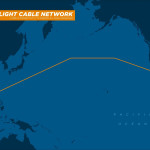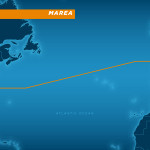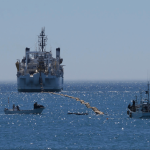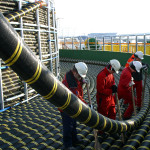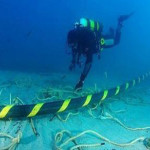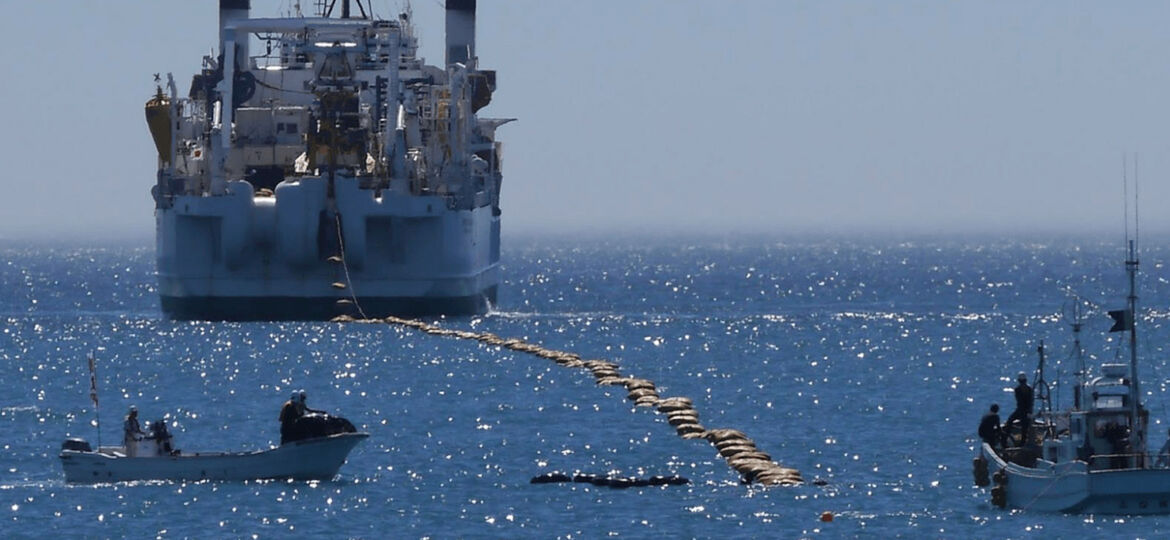
WHY THIS MATTERS IN BRIEF
- Global internet use is exploding and more of the internet giants are taking it upon themselves to fund their own trans oceanic internet cables in order to secure spectrum, decrease latency and improve security
The world of submarine internet cables is vast and its capacity is increasing at a staggering rate, now it’s set to expand further with the news that Google and Facebook are going to be laying down their own, new submarine cable beneath the Pacific.
Along with Pacific Light Data Communication Ltd and TE SubCom, the tech giants have joined forces to lay the first cable that directly connects Los Angeles to Hong Kong and they’ve dubbed the new submarine link the “Pacific Light Cable Network” (PLCN).
The cable, which will be laid and operational by May 2018, will have 12,800km (7,953 miles) of fibre optics and have a huge capacity of 120 terabits per second making it the “highest capacity trans Pacific” cable in existence, a record that is currently held by Google’s co-owned “Faster” cable which runs at 60 Tbps. The new cable will significantly increase the amount and speed of internet traffic that can travel between the US and Hong Kong.
“PLCN will provide enough capacity for Hong Kong to have 80 million concurrent HD video conference calls with Los Angeles,” said Google’s director of networking infrastructure, Brian Quigley.
To allow for the high capacity, the cable will use new technology from TE SubCom, dubbed C+L Band (CLB) the new technology is said to be able to double the capacity that each fibre line can carry and Wei Junkang, the director of PLDC, said it will be an “ultra high capacity” cable.
The cable will connect Manhattan Beach, California, to Tseung Kwan O, a deepwater bay, in Hong Kong.
PCLN will become the latest in the deep sea network of cables that help to provide internet connectivity around the world – according to TeleGeography, there are currently 359 active and planned undersea cable systems around the world.
A global map from TeleGeography shows all the undersea cables currently in operation and planned and as you can see, most of the cables ultimately help to connect major internet exchanges – for example the London Internet Exchange or the Los Angeles Internet Exchange – to the outside world.
The SEA-ME-WE 3 cable that connects Europe to Australia and Asia is the longest cable in the world and has 39 landing points and is 39,000km in length.
Increasingly, internet cables are being built by the hyperscale internet giants and not just specialist cable companies. In part this is down to security – particularly after the revelation that most undersea cables are subjected to tapping and interference from state sponsored actors such as GCHQ and the NSA, but in the main owning their own cables means they own all of the bandwidth, which, against the backdrop of increasing demand for internet services allows them to keep their services performant. Google, for example, now has ownership in six subsea cables.
“Large content providers have huge and often unpredictable traffic requirements, especially among their own data centers,” said Tim Stronge, the vice president of TeleGeography, “their capacity needs are at such a scale that it makes sense for them, on their biggest routes, to build rather than to buy. Owning subsea fibre pairs also gives them the flexibility to upgrade when they see fit, rather than being beholden to a third party submarine cable operator.”
Despite companies wanting to own their own cables, Stronge says, there is a lot of spare capacity in existing subsea systems to last for a long time.
“The issue is that the content providers want to own fibre pairs rather than buying capacity from third parties. Thus, the areas that are receiving the most attention for new cable builds are the routes that connect major data centres of the content providers.”
The Faster cable became operational in June and cost $300 million (£222m), traversing a distance of over 9,000km (5,592 miles) between Japan and the West Coast of the US and earlier this year in May, Facebook and Microsoft announced they would be building a new underwater cable across the Atlantic as well, starting from 2017 and the Marea cable, as it’s come to be known will offer speeds of 160 terabytes per second.

